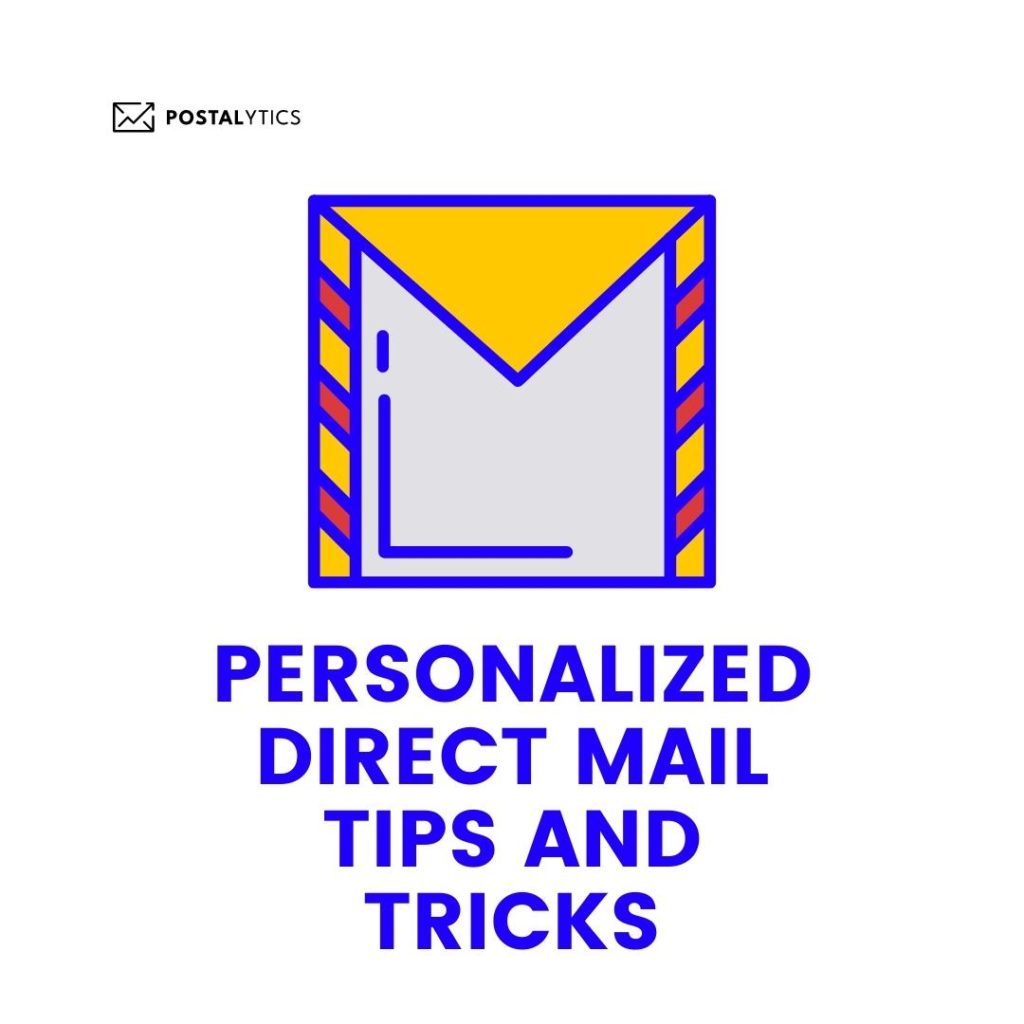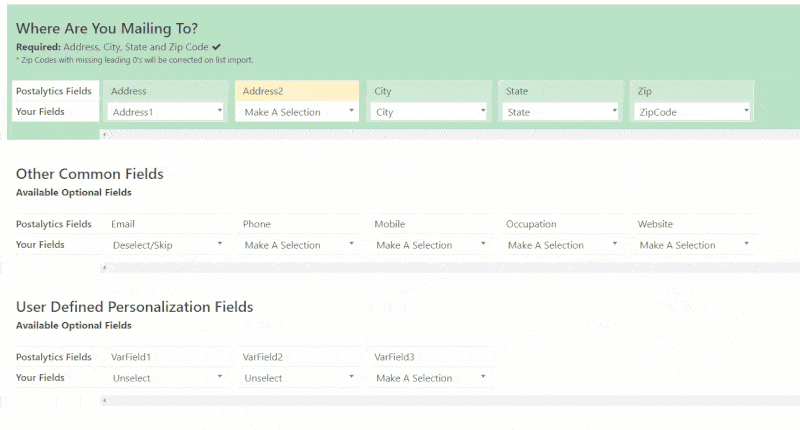
When you mention personalized direct mail to marketers, most people think of the old-style explicit data substitution. We used to see this in “computer letters” that arrived on the scene in the 1970s. Back then, people were impressed by the crude techniques available to marketers at the time. Just seeing their name embedded in the text of a letter made the recipients pay attention.
Today, personalization has progressed miles beyond the old “Dear BOB SMITH, we have an incredible offer for you and the entire SMITH family” style of communication. People still like to see their names; but more importantly, they like to receive mail that applies to them. Messages must be consistent with a customer’s buying habits, shopping/donating frequency, loyalty, interests, and many other factors.
Those old computer letters required highly skilled programmers to produce. The IT department controlled the process. Today, any marketer or business operations person can use tools built into direct mail editor software like Postalytics. These tools make it easy to use variable text, images, or logic to compose messages for an audience of one. The resulting documents look as if they were created one at a time because they are! Gone are the limitations, such as printing variables in all caps or only inserting variables at the end of a line to accommodate short and long data contents.
Today’s tools even allow marketers to test the personalization before they spend the money to print and mail the pieces. Run the data files through the software and then inspect the results. Make sure the correct text, offers, and images are presented on the letters and postcards as you intended.
Here’s some information and a video that shows how to check your file before sending it to print:
Varieties of Variabilities
Personalized direct mail can take place using three different methods of variable data analysis and operation: variable data, variable images, and variable logic.
Variable Data – Replaces a placeholder such as %fname% with the customer’s first name.
Variable Images – Values in the data file control which images to use in the mailpiece. A data record contains URLs referencing images available online.
Variable Logic – Allows you to control the content of a document, such as a letter that includes a required paragraph for customers living in California but not for the residents of any other state.
Personalized Direct Mail is All About the Data
The degree of personalization available to marketers relies on the availability and accuracy of customer data. The more information you have about individual customers, the more personal your communications can become. For existing customers, personal data comes from your own databases. Information might include details like customer status (gold, silver, or bronze), average purchase amount, date of last purchase, product categories, and date of first purchase.
Data for non-customers probably comes from outside your organization. Marketers contract with sources that can enhance the name and address files with demographic data, such as credit scores, estimated income, homeownership, age, sex, geocode coordinates, and dozens of other data points. Personalizing mailpieces with this information will help you craft messages likely to attract attention and boost response rates.
Personalized Response
Personalization may also extend to response devices. Once, this meant printing a customer’s name, address, or ID number on a response card sent with an order or donation. Now, companies usually collect responses online. Personalized URLs (pURLs) lead to individual landing pages that already contain the customer’s information and can continue the personalized approach begun with the direct mail pieces. Marketers can print scannable quick response (QR) codes that lead directly from mailpieces to each customer’s personalized landing page.
Personal landing pages have another benefit — trackability. When a customer or prospect visits their personalized landing page, the activity will be recorded in your CRM. This customer activity can trigger more actions, such as another piece of personalized direct mail, an email drip campaign, or a phone call from a sales representative.

A Little Goes a Long Way
Don’t overdo it. Revealing you have lots of data about an individual crosses the line between effective personalization and unease about privacy. Be subtle and judicious when deciding how you will use personal information in your direct mail campaign.
Personalization need not be explicit to be effective. Vary the images, text, and offers based on the data. In the same direct mail campaign, women may receive different offers from men. Young adults will see images of people in their age group on the postcard while senior citizens’ postcards feature older people. Prospects living further away from a retail store may receive a more generous discount offer to entice them to travel to the store, while you offer people living nearby something less. Scenery featured on postcards sent to people in Colorado will differ from those sent to Florida. The personalized direct mail combinations are endless.
The best news about personalized direct mail is that, with the right technology and service provider network, it costs no more to produce than generic mass mailing communications. Digital printing, advanced software, and distributed workflows make it possible to send one mailpiece or thousands — each one with a personalized appearance and targeted approach. Digital printing requires none of the plates or pre-press work that makes small print runs so expensive.
Triggered Personalized Direct Mail
You can personalize direct mail triggered by approaching the expiration date for policies and subscriptions, for instance. Include each customer’s renewal deadline in the letters to introduce a sense of urgency and encourage customers to act.
Another use of personalized data in triggered direct mail might include pictures of the product a customer purchased. A campaign may promote upgrades or replacement parts according to the age and model of the product.
Clearly, you must understand your target audience before designing a personalized direct mail campaign. What problems are they trying to solve? What languages do they read or speak? What are the income ranges and ages? What are their interests? What differentiates one prospect from the next?
Once you have a general idea of the targets, then you can identify the data you’ll need to craft effective direct mail marketing messages. A casino, for example, might discover that customers playing table games spend more than slot machine players. If the casino’s player database indicates the games each customer plays, they can craft their incentives and offers to match. The casino would make more attractive offers to table players because they represent greater revenue potential.
An analysis of past behavior or buying activity works in all businesses. A sporting goods store might not highlight discounts on sleeping bags to customers who bought only golf equipment, but people who bought fishing or camping gear would likely respond.
Other actions that can trigger personalized direct mail creation happen online, such as when a buyer abandons their shopping cart, downloads something from your website, or stops opening your emails.
Recognition of longevity is always something customers appreciate. If they’ve been loyal customers for some time, don’t treat them as if they only began doing business with you last month. Personalize their direct mail pieces to show your appreciation for their years of loyalty.
Avoid treating everyone on your list as if they were the same. This is a common mistake that leads to wasted efforts like sending new-customer offers or win-back incentives to existing customers or promoting services to which a customer already subscribes. Use your customer data to filter out unqualified buyers or segment them and use variable data logic to offer them something more relevant.
Segmentation
If you don’t have access to the precise customer information necessary to create one-to-one personalized direct mail, you can use segmentation to achieve a similar result. With segmentation, you designate the characteristics of groups of prospects. All owners of pickup trucks, for instance, might be a segment in your database, accompanied by segments for owners of compact cars, luxury sedans, or SUVs. Every prospect in a segment would receive the same direct mail pieces designed specifically for their group. Each group’s mailpiece design would be different.
It is unnecessary to separate segments into separate data files. Simply populate a segment ID field in the data file and use the direct mail composition software to create the proper variable data mailpieces based on the segment ID. The software will do the rest.
Personalization and Segmentation Based on Seller Info
Don’t forget that personalization on your end is important as well. When appropriate, include the assigned account representative’s name, photo, and contact information on personalized direct mail. This effort reminds customers that an actual human is familiar with their account and ready to answer questions. Another personalization technique is to include a map to the nearest store or branch location (be sure to provide the updated address if the site has moved!).

Mailpiece Design Tips
Mailpiece design makes a difference too. Too much information wedged into a letter or postcard can discourage people from reading it. People are busy and they appreciate brevity. This can be challenging for the marketing copy people. It’s more difficult to get the point across in fewer words, but it’s usually advisable to keep your direct mail messaging simple. You can deliver more details via personalized landing pages.
Keep fonts and colors under control. You’ll want to limit your direct mail piece to two fonts and two or three major colors. Use different type sizes, bolding, or underlining to make important text stand out. Remember to pay attention to contrast. Dark text on a light background works best. Some color combinations may be difficult for people to read. Remember that printing uses cyan, magenta, yellow, and black ink (CMYK), but your computer monitor uses red, green, and blue pixels (RGB). Some colors, especially bright colors like bright orange or neon green, may not be reproducible on a digital printing press.
Make sure the offer and call to action are easily seen and clearly described. If you want people to call or go online, the direct mailpiece must communicate the benefits of doing so. Have multiple people proofread the piece to eliminate grammar or spelling errors. Ask the proofreaders to explain the offer and call to action.
Test the design by creating two versions. Alter colors, headlines, or images and send to a small group representative of the larger audience with a method known as A/B testing. Check the results to see which design performs better.
Personalization is Possible
When done well, personalized direct mail performs better, but until software like Postalytics came along, the production of such material was difficult to achieve. Some document composition systems were capable, but they were expensive and had steep learning curves or required professional services engagements to deploy in your environment. Postalytics cloud-based software was created to give average business people access to the benefits personalized direct mail delivers.
About the Author

Dennis Kelly
Dennis Kelly is CEO and co-founder of Postalytics. Dennis joined Boingnet, the predecessor to Postalytics, in 2013. Boingnet was focused on providing print and direct mail marketing service providers the ability to add digital marketing channels to their direct mail campaigns. Postalytics is Dennis’ 6th startup. He has been involved in starting and growing early-stage technology ventures for over 30 years and has held senior management roles at a diverse set of large technology firms including Computer Associates, Palm Inc. and Achieve Healthcare Information Systems.
